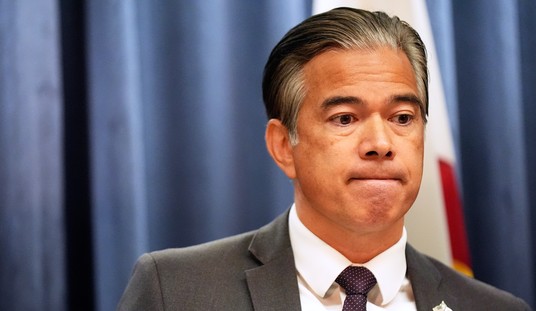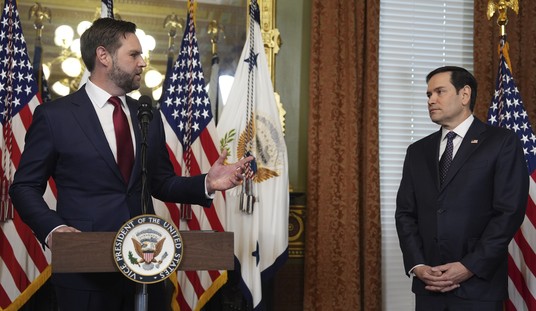Haven’t we seen this one coming for a while? Back in November at the height of the Occupy movement, when activists demanded a bailout on student loans, Reason TV offered this helpful reminder of all the reasons a bailout would do more damage than it would undo:
Nevertheless, the newly-formed Consumer Financial Protection Board has proposed wiping out student-loan debt — but only those debts from private lenders:
A federal agency is asking Congress to consider letting people wipe out some of their student debt by filing for bankruptcy protection. Consumer advocates, however, say the move will do little to help the vast majority of families struggling with college loans.
Richard Cordray, director of the Consumer Financial Protection Bureau, suggested the change to the bankruptcy rules last week in conjunction with a report criticizing private lenders. A 2005 law preventing borrowers from discharging private student loan debt in bankruptcy failed to prompt lenders to lower rates as promised, he said during a media call.
But even if Congress changes the private-loan policy, federal loans — which account for about 85% of the more than $1 trillion in outstanding student debt — would still not be dischargeable through bankruptcy, says Mark Kantrowitz, the publisher of FinAid.org, a student loan tracker.
Recall that one of the criticisms Republicans made about the CFPB when first proposed was that it would disconnect those financial-watchdog efforts from the regulatory efforts of lenders — which would incentivize the panel to produce industry-damaging policies. When the CFPB’s student-loan ombudsman Rohit Chopra testified before a Senate panel to push this effort, Sen. Bob Corker offered a bitter “I told you so“:
Sen. Bob Corker, R-Tenn., the ranking member of the subcommittee, blasted the proposal, saying that seeking bankruptcy protection from student loan debt is “one of the most damaging things that a consumer can possibly do,” and would create a hardship for private lenders.
Moreover, the bankruptcy proposal has rekindled conservatives’ strong opposition and resentment towards the CFPB, which was created as part of the Dodd-Frank financial overhaul legislation and initially headed by Harvard professor Elizabeth Warren who left to run for the Senate in Massachusetts.
“I just find it fascinating that one of the first things that you would do as a consumer protection agency” is propose allowing private borrowers to seek bankruptcy protection, Corker told Rohit Chopra, the financial protection bureau’s student loan ombudsman, who also appeared before the subcommittee. “I think you can see now why so many of us thought it was a really terrible idea to have a consumer agency separate from the financial regulators.”
In my column today for The Fiscal Times, I argue that the problem is twofold — the irrational higher-education bubble and the lack of sound economic policy to drive job growth. In both cases, a bailout would make matters worse:
According to the New York Federal Reserve, student-loan debt for those under 30 has risen 56% since 2005 alone, thanks to The Higher Education Bubble, as law professor and political commentator Glenn Harlan Reynolds titled his recent book on the subject. Reynolds warns that this bubble is ready to pop. “Bubbles form when too many people expect values to go up forever,” Reynolds writes in his introduction. “Bubbles burst when there are no longer enough excessively optimistic and ignorant folks to fuel them. And there are signs that this is beginning to happen already where education is concerned.” What would be the scope of the damage done by a bubble burst in higher-ed lending? The aggregate debt from private student loans stands at $150 billion, with 2.9 million borrowers, averaging $51,724 per student.
Instead of curbing the artificial demand caused by the government intervention in lending markets, the Obama administration wants to stiff the very lenders that relied on the 1977 law forbidding bankruptcy on student loans as well as the government subsidies that caused them to conduct that high-risk lending in the first place. That could wipe out a large amount of capital on the books at the moment, further destabilizing private lending markets overall and possibly risking bank health in the bargain. Not every one of those borrowers would declare bankruptcy, but the temptation that this regulatory change presents would probably have a significant percentage ready to do so. …
Instead of handing out free passes to renege on debt, the Wall Street Journal wondered why the Obama administration doesn’t address the real acute problem for these borrowers – an economy that doesn’t produce jobs. “Wouldn’t it be easier merely to encourage job creation,” the editorial board asked, “rather than try to anticipate and make taxpayers pay for every consequence of joblessness?” Yes, it would – and the arbitrary destruction of billions in student-loan debt capital would make it even more difficult for others to get the loans they need to open new businesses and expand existing ones.
The CNBC report adds that the reason that the Obama administration isn’t pushing a complete default on student debt — 85% of which is now held by the federal government — is because it would shift the costs to taxpayers. That will happen with a private-debt default, too, since most of that debt was issued with federal guarantees. Even if that wasn’t the case, taxpayers and consumers would pay the costs in the price of credit and a lack of capital for more job creation, as well as the damage that the further instability of failed securities based on student loans would bring.
But hey — it might buy Obama a few more votes from younger voters. If so … his plan will have worked.







Join the conversation as a VIP Member